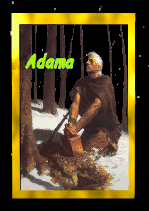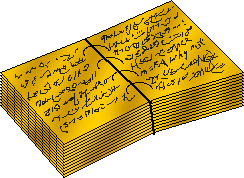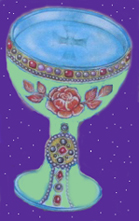
Forum encyclopédique d'histoire des Mormonismes et de la Franc-Maçonnerie & archéologie - sciences - aéronautique - paranormal - ufologie- orbs - ésotérisme - symbolisme
|
|
| | Who Were The Knights Templar? |  |
| | | Auteur | Message |
|---|
Commandeur Adama
Magister Ordo Kolob - Admin

Nombre de messages : 8905
Age : 60
Localisation : Pays de Néphi - Mormon forest
Date d'inscription : 16/02/2007
Chevalier de Kolob - Vers la Sagesse
 A reçu la Lumière: 180 A reçu la Lumière: 180
 En quête du Vase Précieux et Elu: En quête du Vase Précieux et Elu:
    (150/200) (150/200)
 A la recherche du couple de Licornes du Jardin d'Eden: A la recherche du couple de Licornes du Jardin d'Eden:
    (7/700) (7/700)
 |  Sujet: Who Were The Knights Templar? Sujet: Who Were The Knights Templar?  Sam 17 Nov - 2:44 Sam 17 Nov - 2:44 | |
|  Following the victory of the First Crusade a group of knights, led by Hugues de Payens, offered themselves to the Patriarch of Jerusalem as a military force. This proposed military force had the mandate of protecting Christian pilgrims who were en route to the Holy Land In the year 1118 AD King Baldwin II granted the Templars quarters on the Temple Mount. For the first nine years of their existence, the order consisted of nine knights. Speculations of treasure hunting aside, one of the reasons for the limited number of members may have been the reluctance to take Templar vows. Chastity, poverty and obedience were hardly a lifestyle greatly sought after. In the year 1127 the Cistercian abbot, Bernard of Clairvaux, wrote a rule of order for the Templars that was based on his own Cistercian order's rule of conduct. Additionally, Bernard did a great deal to promote the Templars. Perhaps Bernard's greatest contribution to the order was a letter that he wrote to Hugues de Payens, entitled De laude novae militae (In praise of the new knighthood.) This letter swept throughout Christendom with the result being that many men, of noble birth, joined the ranks of the Templar Order. Those who were unable to join often gifted the Templars with land and other valuables. While it is true that the Templars were not permitted, by their rule, to own much of anything personally, there was no such restriction on the order as a whole. As such the gifts of land were accepted and put to immediate use by the order. From humble beginnings of poverty in 1118, when the order relied on alms from traveling pilgrims, the Order quickly grew to have the backing of the Holy See and the collective European monarchies. In the process, the order became wealthy. Aside form the gifts showered upon them, they were experts in commerce and free from the taxation and tithes imposed on other orders.  However, in less than two centuries, the Templars would meet their demise perhaps because of their wealth or fear of their seemingly limitless powers. It is generally agreed that Philip IV was envious of the Templar's wealth and sought to secure it for himself. Regardless of the motivation, the order was taken down at the hands of Pope Clement V and the King of France in 1307. On October 13, 1307 Philip had the Templars arrested on grounds of heresy; since this was the only charge that would allow the seizing of their money and assets. The Templars were tortured and confessions were given. These confessions included: Trampling and spitting on the cross Homosexuality and Sodomy Worshipping of an idol named Baphomet Philip was successful in ridding the Templars of their power and wealth and urged all fellow Christian leaders to do the same thing. On March 19th, 1314 the last Grand Master of the Knights Templar, Jacques de Molay, was burned at the stake. De Molay is said to have cursed King Philip and Pope Clement as he burned, asking both men to join him in death within a year. Whether the story is an apocryphal legend or a matter of historical fact depends largely on one's point of view. However, Pope Clement V died only one month later and Philip IV seven months after that. Link : http://www.templarhistory.com/who.html | |
|   | | Commandeur Adama
Magister Ordo Kolob - Admin

Nombre de messages : 8905
Age : 60
Localisation : Pays de Néphi - Mormon forest
Date d'inscription : 16/02/2007
Chevalier de Kolob - Vers la Sagesse
 A reçu la Lumière: 180 A reçu la Lumière: 180
 En quête du Vase Précieux et Elu: En quête du Vase Précieux et Elu:
    (150/200) (150/200)
 A la recherche du couple de Licornes du Jardin d'Eden: A la recherche du couple de Licornes du Jardin d'Eden:
    (7/700) (7/700)
 |  Sujet: Re: Who Were The Knights Templar? Sujet: Re: Who Were The Knights Templar?  Sam 17 Nov - 2:46 Sam 17 Nov - 2:46 | |
|  The following article is intended as an overview of the Templar's hierarchy. Please keep in mind that as the Order grew in size and scope new positions were created. The Grand Master The Grand Master was the supreme authority of the Templar Order and answered to none save the pope. Once elected to the office, the Grand Master served for the remainder of his life. In several cases that lifetime was cut short. Several Grand Masters were killed in battle, showing that the position was far more than an administrative one. While each country had its own Master, the Grand Master was above each of them. In addition to overseeing military operations, the Grand Master was also responsible for the business dealings of the Order. Seneschal The Seneschal was the right hand man to the Grand Master and in modern terms would be similar to a vice president of a corporation. The Seneschal also acted as a consigliare or advisor to the Grand Master and looked after a great deal of the administrative duties. Along with the Grand Master, the Seneschal ruled over eight Templar provincial Masters. These provinces were chiefly Aragon, Apulia, England, France, Hungary, Poitiers, Portugal and Scotland. Marshal The Marshal of the Order was the Templar in charge of war and anything that was related to it. In this sense the Marshal could be viewed as the second most important member of the Order after the Grand Master. His personal retinue was comprised of two squires, one turcoman, one turcopole and one sergeant. He also had four horses at his command. Under Marshal The Under Marshal was in charge of the footmen and the equipment. Standard Bearer The Standard Bearer was in charge of the squires and, despite the title of his office, never seemed to actually carry the Order's standard himself. Draper The Draper was in charge of the Templar garments and linens and while this may seem like a menial task, the Templar Rule of Order states that after the Master and Marshal, the Draper was superior to all brethren. The Templar Rule of Order said of the Draper's responsibilities regarding the robe of the order, "and the Draper or the one who is in his place should studiously reflect and take care to have the reward of God in all the above-mentioned things, so that the eyes of the envious and evil-tongued cannot observe that the robes are too long or too short; but he should distribute them so that they fit those who must wear them, according to the size of each one." The Draper had in his personal retinue two squires, a number of tailors and one brother in charge of the pack animals who would carry supplies. In addition the Draper, like the Marshal, had four horses at his disposal. Commanders of the Lands: Jerusalem, Antioch and Tripoli These Templar officers operated much like a Baillie and operated under the Masters. Commanders were responsible for all Templar houses, castles and farms in their jurisdiction. The personal retinue of the Commanders consisted of two squires, two foot soldiers, one sergeant, one deacon and one Saracen scribe. Like others, the Commander had four horses at his command as well as one palfrey (riding horse). Commanders of knights, houses and farms (Casals) These Templars fell under the Commanders of Lands and were responsible for the day to day operations of the various estates under their care. Generally speaking, they were knights, but if no knight resided in the region, the position could go to a sergeant. If the Commander was a knight he was permitted four horses, but if a sergeant he was allowed only two. Provincial Masters Provincial Masters, who governed the western districts, were similar to the Commanders of Lands, but seem to have largely been responsible for managing revenue and recruiting new men to the Order. Knights and Sergeants The bulk of the Templar's military might was comprised of knights and sergeants. Although both classes of Templars were as likely to die in battle, the knight had a higher ranking within the Order. Knights had to be men of noble birth and wore the white mantle that is the most familiar garment of the Order. Each knight was permitted one squire and three horses. Sergeants did not have to be of noble birth and to show their lower rank, sergeants wore a black or brown mantle. They were given one horse and had no squires under their command.  | |
|   | | Commandeur Adama
Magister Ordo Kolob - Admin

Nombre de messages : 8905
Age : 60
Localisation : Pays de Néphi - Mormon forest
Date d'inscription : 16/02/2007
Chevalier de Kolob - Vers la Sagesse
 A reçu la Lumière: 180 A reçu la Lumière: 180
 En quête du Vase Précieux et Elu: En quête du Vase Précieux et Elu:
    (150/200) (150/200)
 A la recherche du couple de Licornes du Jardin d'Eden: A la recherche du couple de Licornes du Jardin d'Eden:
    (7/700) (7/700)
 |  Sujet: Re: Who Were The Knights Templar? Sujet: Re: Who Were The Knights Templar?  Sam 17 Nov - 2:49 Sam 17 Nov - 2:49 | |
|  Article © Alan Butler and Templar History Magazine We have only scant and sometimes contradictory accounts as to the actual 'founding' of the Poor Knights of Christ and the Temple of Solomon. The evidence put forward by Guillaume de Tyre, a later commentator, suggests that it was in the year 1118 that Hughes de Payen, a member of the lesser nobility from Champagne, presented himself, with a number of companions, before the throne of Baudoin II of Jerusalem. After 1118 comes the mysterious period, about which we know so little. What were the embryonic Knights Templar doing in Jerusalem? Were they really intent on keeping the roads clear for pilgrims and if so, why were there only about a dozen of them? Is it possible that they had some other raison d'être, such as digging below the Temple Mount? This is speculation and represents possible intrigue covered in other articles and it is fair to say that the first genuine date we have for the Templar Order is that of 1128, at which time the Templars officially came into existence. It is suggested that at some period prior to 1128, Hughes de Payen wrote to Bernard, later St. Bernard of Clairvaux, by this time the leading light in the Cistercian Order and a force to be reckoned with in the Catholic Church. Hughes is supposed to have asked St. Bernard if he would consider sponsoring the embryonic Order and perhaps create a 'Rule' for what would be essentially an institution of Holy Knights. It is extremely unlikely that St. Bernard would have needed to be approached officially by Hughes, who was almost certainly known to the little man from Dijon and may indeed have been a kinsman. A much more likely scenario is that the shadowy group of Champagne based nobles who were almost certainly responsible for the formation of the Cistercian Order some years previously, had mooted the idea of the Templars at least as early as 1118. It is suggested that documents found in Seborga in northern Italy virtually prove that St. Bernard at least had a direct hand in forming the Templars.  The story goes that St. Bernard had been responsible for creating a monastery in Seborga, as early as 1113. The same documents are supposed to suggest that Bernard went to this monastery in 1117, in order to release two monks from their vows. These men were Hughes de Payen and Bernard's own uncle, Andre de Montbard, two of the founders of the Templars. I view these suggestions with more than a little skepticism, mainly born of the fact that Bernard did not enter the monastic life himself until 1113 - so it hardly seems likely that he would be simultaneously creating a new monastery in northern Italy. I intend to research these claims much more fully and hope to report my findings, if any, in a subsequent issue. However, there is no doubt that, in one way or another, Bernard of Clairvaux, the shining star of monasticism, was prevailed upon to take the embryonic Templar Order under his wing, to regularize it and to seek an official recognition by the Pope. In preparation for the event, Bernard penned a long document entitled 'In Praise of the New Knighthood'. This was a sort of open letter that justified the existence of a group of monks whose only real existence was to fight and kill others - something that flew directly in the face of all monastic endeavors. It is a mark of respect to Bernard that he not only managed to convince many of his fellow monks that this was an excellent idea, but also the pope. | |
|   | | Commandeur Adama
Magister Ordo Kolob - Admin

Nombre de messages : 8905
Age : 60
Localisation : Pays de Néphi - Mormon forest
Date d'inscription : 16/02/2007
Chevalier de Kolob - Vers la Sagesse
 A reçu la Lumière: 180 A reçu la Lumière: 180
 En quête du Vase Précieux et Elu: En quête du Vase Précieux et Elu:
    (150/200) (150/200)
 A la recherche du couple de Licornes du Jardin d'Eden: A la recherche du couple de Licornes du Jardin d'Eden:
    (7/700) (7/700)
 |  Sujet: Re: Who Were The Knights Templar? Sujet: Re: Who Were The Knights Templar?  Sam 17 Nov - 2:53 Sam 17 Nov - 2:53 | |
|  The Seal Of The Knights Templar Before looking at the seal that has become synonymous with the Knights Templar, it is important that we have an understanding of the purpose of such seals. The most common way to show the authenticity of a document during the middle ages was to affix a seal to it. These seals were images carved into a block, which, when pressed into warm wax, left behind an inverse image of the carving - working much like a modern photo negative does. This seal identified the author of the document and was meant to stop people from forging or tampering with official documents and correspondences. In an age when even illiterate people needed to conduct business transactions, seals allowed a person to declare their agreement even if they could not sign their names. Ecclesiastical bodies, monarchs, individuals and even orders like the Templars each had their peculiar seals. However, it is but one seal, often referred to as the 'traditional seal,' that has garnered the most attention and speculation. The traditional seal of the Knights Templar depicted two knights riding a single mount and was used by several Grand Masters over the Templars' 200 year history. As is the case with any symbol, the attached meaning can vary and great studies have been done into symbolism - perhaps most notably the eminent psychologist and occultist Carl Jung. The image of the two knights astride a single mount was said to represent their vow of poverty - the original members who founded the order being so poor that each knight could not afford his own horse. This seems to have been little more than a poetic tradition, for as early as the Council of Troyes, when the Latin Rule was composed an individual knight was permitted to have three horses and a Grand Master was permitted to own even more. Some have theorized that the dual knights riding a single mount was a reference to the homosexuality that the knights were accused of practicing. This theory most certainly came into existence after the accusations brought against the order during and after their arrest in 1307. There has been some thought that the Templar seal's two knights is neither a representation of the Templar's vows of poverty or alleged homosexual activities, but rather a representation of the duality or conflict that existed in the order: They were poor by vow, yet rich beyond belief (in their assets) They were introspective, yet well versed in the matters of the world They were monks on one hand, yet feared as warriors on the other Others have cited the Gospel of Matthew as the source of the seal's symbolic meaning claiming that the one knight represented a Templar while the other depicted Christ. This comes from the passage in Matthew where Jesus Christ says: "Wherever two or more of you are gathered in My name, there am I, in the midst of them." The reverse of the traditional seal depicted the dome of the Church of the Holy Sepulchre, although many have erroneously claimed that it is the Dome of the Rock. Link : http://www.templarhistory.com/seal.html | |
|   | | Contenu sponsorisé
 |  Sujet: Re: Who Were The Knights Templar? Sujet: Re: Who Were The Knights Templar?  | |
| |
|   | | | | Who Were The Knights Templar? |  |
|
| | Permission de ce forum: | Vous ne pouvez pas répondre aux sujets dans ce forum
| |
| |
| |
|

